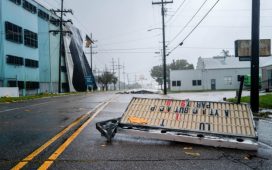Unlock the Editor’s Digest for free
Roula Khalaf, Editor of the FT, selects her favourite stories in this weekly newsletter.
The global insurance sector should expect $151bn in annual losses from natural catastrophes and a lot more in bad years, according to a new forecast that highlights the challenges of climate change and urban expansion.
The industry is struggling to cope with a surge in property claims from natural disasters that has pushed up the cost of cover and made insurers pull back from some at-risk areas.
Verisk, one of the big risk modelling firms whose models are used across the insurance and reinsurance sector, said on Tuesday that its average expected loss for the sector was at a new high.
Rob Newbold, a president at Verisk, said that the past four difficult years for the industry “should not be seen as outliers”.
“Our models show the insurance industry should be prepared to experience total annual insured losses from natural catastrophes of $151bn on average, and well more than that in large loss years,” he added. The figure includes crop losses; without those the forecast is $119bn.
Newbold said Verisk hoped the industry could use the forecast to “prepare for large loss years and . . . be better positioned to manage these challenging years without risking their solvency”.
The group said the rise in losses had several drivers, highlighting the impact of climate change, the rise in exposure as populations grow in at-risk areas and inflation in rebuilding costs.
Verisk said “detecting [the] signal” of climate change in the rise of global losses was challenging, partly because of other factors in the data such as shifting inflation and natural variability in climate events.
It said climate change was currently the minor factor in the increase in losses, but it expected this impact to become more significant over the next few decades.
“Climate change affects all atmospheric perils, including tropical cyclones, but its impact is more immediate and pronounced on wildfire, flood, and severe thunderstorms,” said Verisk in its report.
“The effects on wildfire and floods are relatively well understood, whereas the relationship with severe thunderstorms is scientifically less established.”
Verisk is working with scientists to better understand what was behind a record year for severe thunderstorms in the US in 2023.
Risk modellers and insurers have invested heavily in researching “secondary” perils such as storms and wildfires, which do not have the impact of a big hurricane or earthquake, but where the combined impact is becoming a significant challenge for the sector.
Climate Capital

Where climate change meets business, markets and politics. Explore the FT’s coverage here.
Are you curious about the FT’s environmental sustainability commitments? Find out more about our science-based targets here











